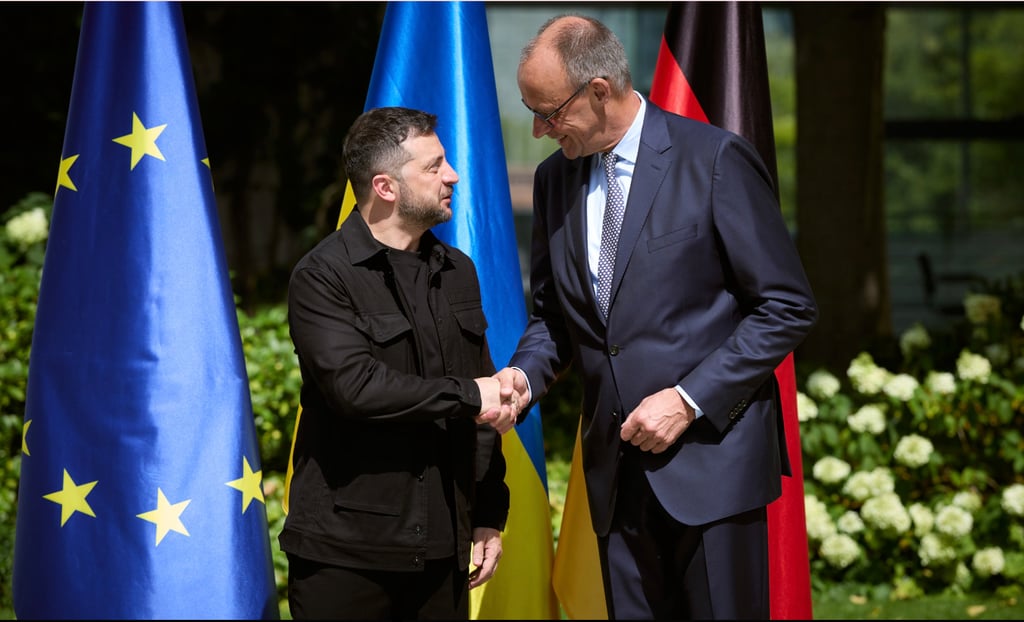Ukraine's Diplomatic Offensive Amidst Military Challenges: A Global Analysis
8/14/20253 min read


Ukraine's Diplomatic Offensive Amidst Military Challenges: A Global Analysis
In a world where geopolitical tensions often dictate the course of international relations, Ukraine's recent diplomatic maneuvers, led by President Volodymyr Zelenskyy, offer a fascinating case study in resilience and strategy. As of August 12, 2025, Zelenskyy's address highlighted a robust engagement with global partners, aiming to fortify Ukraine's position amidst an escalating conflict with Russia. This blog post delves into the intricacies of Ukraine's diplomatic efforts, the backdrop of military challenges, and the broader implications for U.S. global strategy.
The Diplomatic Frontline
Zelenskyy's recent communications underscore a concerted effort to maintain and expand international support. His discussions with leaders from Türkiye, Qatar, Romania, and the Netherlands reveal a strategic approach to diplomacy. The Ukrainian president emphasized a unified stance among 26 EU countries, contrasting sharply with Hungary's dissent, led by Prime Minister Viktor Orban, who recently admitted Ukraine's defeat and questioned Western involvement. This divergence within the EU illustrates the complex web of alliances and the challenges of maintaining a cohesive front.
The mention of upcoming engagements with the United States and other European colleagues suggests a pivotal moment for Ukraine's diplomatic strategy. These interactions are not merely symbolic; they are part of a broader effort to secure economic, military, and political support. The timing is critical, as Ukraine faces significant military pressures, particularly in the Pokrovsk region, where Russian forces have made notable advances.
Military Realities on the Ground
While diplomacy plays out on the global stage, the military situation in Ukraine remains dire. Reports from credible sources indicate that Russian forces have captured key areas around Pokrovsk, a strategic city in Donetsk Oblast. This offensive, part of a broader campaign, has seen Russian troops advance despite Ukrainian defenses. The capture of Prohres in July 2024 marked a turning point, and subsequent gains have brought Russian forces perilously close to Pokrovsk itself.
The military analyst Kostyantyn Mashovets noted a massive Russian troop buildup in the Pokrovsk direction, with estimates of 110,000-112,000 soldiers supported by significant artillery and armor. This escalation contrasts starkly with Zelenskyy's diplomatic optimism, highlighting the dual fronts on which Ukraine must fight. The Ukrainian military's struggle to hold ground, coupled with the evacuation of civilians from Pokrovsk, paints a picture of a nation under immense pressure.
U.S. Global Strategy and Ukraine
For the United States, Ukraine's plight is more than a regional conflict; it is a test of global leadership and commitment to democratic values. The U.S. has been a key ally, providing military aid and diplomatic support. However, the effectiveness of this support is under scrutiny as Russian advances continue. The upcoming discussions between Zelenskyy and U.S. officials could be crucial in recalibrating this support, potentially influencing the trajectory of the conflict.
The U.S. must navigate a delicate balance. On one hand, there is a moral imperative to support Ukraine against aggression. On the other, there are practical considerations, including the risk of escalating tensions with Russia and the broader implications for global stability. The recent EU declaration reaffirming support for Ukraine's territorial integrity and sovereignty aligns with U.S. interests, but the dissent from Hungary complicates this unity.
Implications for Global Stability
The Ukraine conflict is a microcosm of larger global dynamics. The involvement of major powers like the U.S., Russia, and the EU, alongside regional players like Türkiye and Qatar, underscores the interconnected nature of modern geopolitics. Zelenskyy's diplomatic offensive is not just about securing immediate support; it is about shaping the narrative and ensuring Ukraine's voice is heard in international forums.
The military challenges, however, remind us that diplomacy alone cannot win wars. The juxtaposition of Zelenskyy's optimistic tone with the grim reality on the ground raises questions about the sustainability of Ukraine's strategy. Can diplomatic gains offset military losses? How long can Ukraine hold out without a significant shift in the balance of power?
Conclusion
Ukraine's diplomatic efforts, led by President Zelenskyy, are a testament to the power of international engagement in times of crisis. However, the military challenges in Pokrovsk and beyond highlight the limitations of diplomacy without corresponding military strength. For the U.S., the situation in Ukraine is a critical test of its global strategy, requiring a careful blend of support and pragmatism.
As the world watches, the outcome of this conflict will have far-reaching implications for global stability, the future of NATO, and the role of the U.S. in international affairs. Ukraine's resilience in the face of adversity offers lessons in perseverance, but also stark reminders of the complexities of modern warfare and diplomacy.
Thought Questions
How can the U.S. balance its support for Ukraine with the risk of escalating tensions with Russia?
What role should other global powers play in resolving the Ukraine conflict?
Can diplomatic efforts alone secure a sustainable peace for Ukraine, or is military parity essential?
hello@boncopia.com
+13286036419
© 2025. All rights reserved.